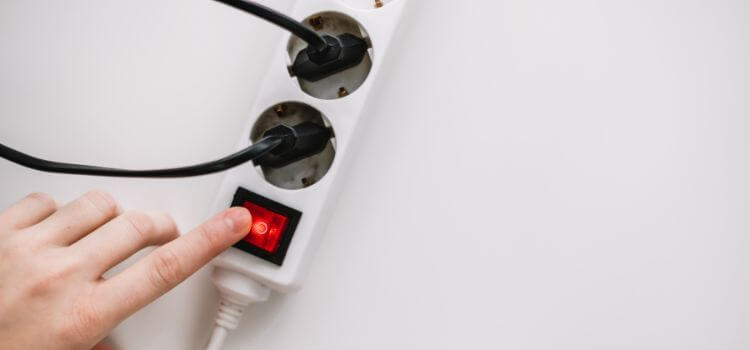As an Amazon Associate, I earn from qualifying purchases.
The Joule Surge Protectors are an essential TV device designed to protect TVs from voltage spikes, commonly called power surges. Power outages, lightning strikes, electrical grid fluctuations, and other events can all cause these surges. A surge protector’s joule rating is pivotal when purchasing one. This number shows how much energy the device can absorb before failing. This article will explore the importance of joule ratings for surge protectors, especially for televisions and other valuable electronics.
What is a Joule?
The joule is an energy unit used to quantify the energy absorbed by a surge protector. The joule rating indicates how much power the device can use before it can no longer provide protection. For example, a joule surge protector with a rating of 1,000 can absorb 1,000 joules of energy from a surge before its protective capabilities diminish.
Why Joule Ratings Matter
The joule rating is crucial for several reasons:
- Protection Level: A higher joule rating means better protection for your devices. It is essential for high-value electronics like televisions, computers, and home theater systems.
- Longevity: Surge protectors with higher joule ratings tend to last longer, as they can absorb more energy from multiple surges over time. Lower-rated surge protectors may fail after just one significant surge.
- Device Sensitivity: Different devices have varying levels of sensitivity to power surges. More sensitive electronics, such as those with intricate circuitry, require surge protectors with higher joule ratings to ensure adequate protection.
How Many Joule Surge Protectors Do You Need for a TV?

When determining how many joules of surge protection you need for your television, consider the following factors:
- Value of the TV: The more expensive the television, the more protection it should have. A surge protector rating of at least 1,000 joules is recommended for a standard LED or OLED TV. For high-end models or larger screens, consider surge protectors with ratings of 2,000 joules or more.
- Usage Environment: A higher joule rating is advisable if you live in an area prone to thunderstorms or unstable electrical grids. Frequent surges can quickly wear out lower-rated surge protectors, leaving your devices vulnerable.
- Additional Devices: If your TV is part of a more extensive home entertainment system, including gaming consoles, sound systems, and streaming devices, you should factor in the total wattage of all devices when selecting a surge protector. Better safety for all connected devices will come from a surge protector with a greater joule rating.
Joule Rating Guidelines for Different Devices
To help you choose the suitable surge protector for your needs, here’s a breakdown of recommended joule ratings based on the type of device:
- 500 to 1,000 Joules: Suitable for small electronics like lamps, phone chargers, and essential laptops. It is not recommended for sensitive or high-value devices.
- 1,000 to 2,000 Joules: Ideal for office equipment, primary gaming consoles, and mid-range televisions. This line strikes a decent mix between cost and protection.
- 2,000 to 3,000 Joules: This level of protection is recommended for high-end televisions, gaming systems, and computers that store critical data. It is suitable for environments with frequent power surges.
- 3,000 Joules and Above. Best for comprehensive protection of expensive home theater systems, professional audio equipment, and any device critical to your daily operations.
Other Factors to Consider When Choosing a Surge Protector

While joule rating is a significant factor, there are other necessary specifications to consider:
- Clamping Voltage: At this voltage, the surge protector will deflect excess electricity away from connected devices. A lower clamping voltage (ideally 330 volts or less) is better because the protector will activate sooner during a surge.
- Response Time: The quicker the surge protector can respond to a surge, the better. Look for surge protectors with a fast response time to minimize potential device damage.
- Number of Outlets: Make sure there are enough outlets on the surge protector for your gadgets. Some models also include USB ports for charging mobile devices.
- Warranty and Equipment Protection: Many surge protectors have warranties covering connected equipment. It can provide additional peace of mind, especially for high-value electronics.
When to Replace Your Surge Protector
Surge protectors do not last indefinitely. Over time, their ability to absorb surges diminishes. Here are some signs that it may be time to replace your surge protector:
- Age: If your surge protector is several years old, consider replacing it, especially if it has been subjected to multiple surges.
- Indicator Light: Many surge protectors have an LED indicator that shows whether protection is still active. If this light is off, the surge protector may no longer function.
- After a Major Surge: If you experience a significant power surge, such as during a lightning storm, it’s wise to check your surge protector and consider replacing it if there’s any doubt about its effectiveness.
Final Thoughts About Joule Surge Protectors for TV
Choosing a suitable surge protector for your television and other electronic devices is crucial for safeguarding your investments. Understanding joule ratings and their implications can help you make an informed decision. Choose a surge protector whose joule rating corresponds to the cost and fragility of the electronics you want to keep safe.
Remember to consider additional factors such as clamping voltage, response time, and warranty coverage to ensure comprehensive protection for your electronics. Investing in a quality surge protector can prevent costly repairs or replacements down the line, providing peace of mind and security for your valuable devices.
Frequently Asked Questions About Joule Surge Protectors for TV

What is a surge protector, and how does it work?
Electronic devices are protected from unexpected voltage spikes or drops by a device known as a surge protector. It diverts excess voltage from connected devices, absorbing the surge energy. When the voltage exceeds a certain threshold, the surge protector activates and redirects the excess power to the ground, preventing it from damaging your electronics.
How many joules do I need for my television?
A surge protector with a rating of at least 1,000 joules is recommended for most televisions. If you have a large or expensive TV, consider getting a surge protector with a 2,000 joule rating or more. This ensures adequate protection against power surges, especially in areas prone to electrical fluctuations.
How can I tell if my surge protector is still effective?
An indicator light on many surge protectors indicates whether the device is operating correctly. If the light is off, it may suggest that the surge protector is no longer effective. Additionally, if your surge protector is several years old or has experienced significant surges, it’s wise to replace it to ensure continued protection.
Can I use a surge protector with multiple devices?
Yes, As long as the combined wattage of all connected devices stays below the surge protector’s capacity, you can use it with numerous devices. For a home entertainment system, look for a surge protector with enough outlets and a high joule rating to protect all devices effectively.
What should I do if my surge protector has been damaged?
If you suspect your surge protector has been damaged, especially after a power surge or storm, it’s best to replace it. Using a broken surge protector can continue to endanger your gadgets. Look for any obvious damage indicators, such as melted or burned parts, and replace the unit if necessary.
Amazon and the Amazon logo are trademarks of Amazon.com, Inc, or its affiliates.